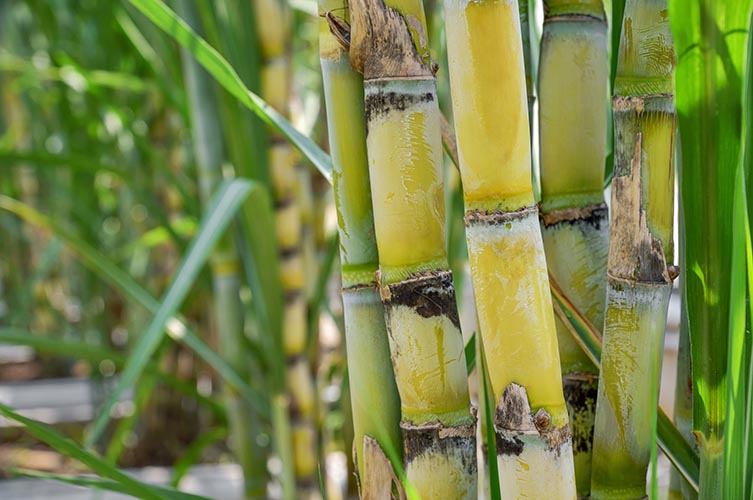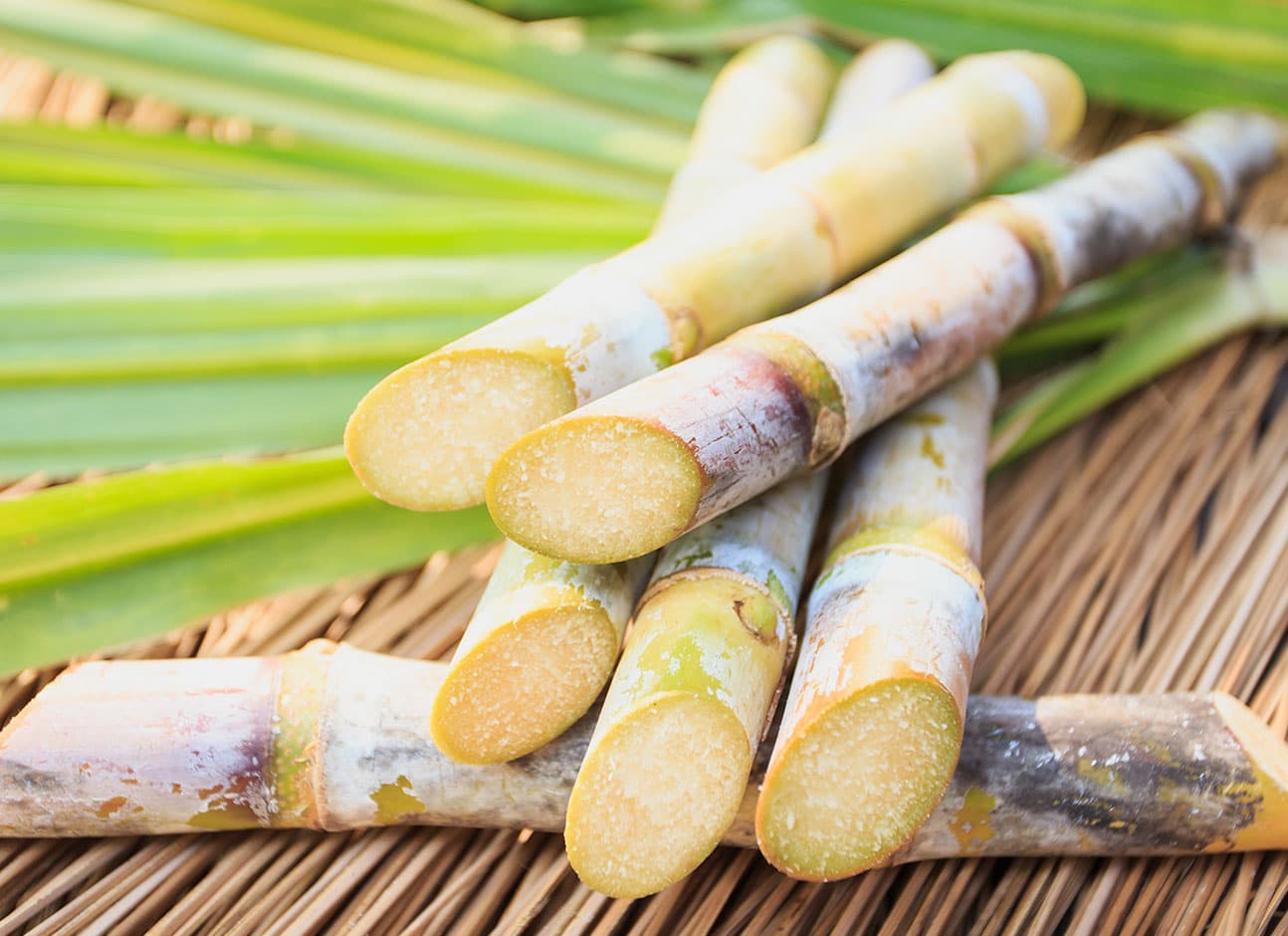Unveiling the Value of Sugar Canes: What Are Sugar Canes Used For in the Cane Sugar Sector?
Sugar walking sticks offer as the keystone of the walking cane sugar sector, largely supplying the raw material required for sugar manufacturing. Their capacity to convert sunshine into sucrose through photosynthesis is critical. Beyond their sweetening homes, sugar walking sticks find energy in various cooking applications and arising markets. However, the full extent of their influence expands beyond the kitchen area. This discussion will certainly discover the complex functions of sugar canes in both industry and economic climate.
The Function of Sugar Canes in Sugar Manufacturing
Sugar walking canes function as the foundational basic material in the walking cane sugar industry, playing an important duty in the manufacturing procedure. These tall, seasonal lawns flourish in exotic and subtropical climates, where they absorb sunlight and nutrients to create sucrose. The harvesting of sugar walking sticks normally takes place when the plants reach maturity, maximizing their sugar content.Once harvested, the walking sticks undertake crushing to remove the juice, which contains liquified sugars. This juice is after that cleared up and focused via dissipation, changing it into a syrup. Ultimately, crystallization occurs, enabling the splitting up of sugar crystals from the staying syrup.The drawn out sugar undergoes further refining to attain the preferred pureness and top quality - What Are Sugar Canes Used For. Consequently, the whole process highlights the crucial contribution of sugar walking canes to sugar manufacturing, underscoring their significance as both a basic material and a driver in the manufacturing of walking stick sugar

Diverse Applications in Food and Beverage Market
In the food and drink sector, sugar cane offers several essential features. It acts not only as a main sweetener in various products yet likewise as a flavoring agent that boosts taste accounts. Furthermore, its parts play a considerable role in fermentation and purification processes, contributing to the manufacturing of alcohols.
Sweetener in Products

The versatility of walking cane sugar as a sweetener makes it a staple in a wide selection of food and drink products. Commonly made use of in baked goods, it improves the taste and appearance of cakes, cookies, and breads by providing moisture and promoting browning throughout baking. In beverages, cane sugar is a preferred choice for sweetening juices, soft drinks, and teas, enabling a balanced flavor account. Furthermore, it works as an important ingredient in dressings, sauces, and marinades, adding to a harmonious blend of tastes. Walking stick sugar's capacity to dissolve rapidly and its constant sweet taste account further solidify its function as a preferred sweetener - What Are Sugar Canes Used For. In general, its diverse applications highlight the integral role of cane sugar in the culinary landscape
Seasoning Representative Use
Utilizing walking stick sugar as a flavor agent prolongs past its function as a plain sugar, enhancing a range of culinary productions. In the food and beverage sector, it improves taste accounts by balancing acidity and bitterness, making it a crucial component in dressings, marinates, and sauces. In addition, walking cane sugar adds to the overall mouthfeel, supplying a positive appearance in baked items and confections. Its caramelization during cooking adds deepness to both pleasant and full-flavored meals, while likewise functioning as a chemical in jams and jellies. Additionally, in beverages, walking stick sugar is used to intensify tastes in mixed drinks and soft drinks, ensuring a more enjoyable drinking experience. This adaptability underscores its value in varied cooking applications.
Fermentation and Purification
Walking cane sugar plays a substantial duty in fermentation and purification procedures, which are important in creating a variety of alcohols and food. Throughout fermentation, yeast converts sugars right into alcohol and carbon dioxide, a fundamental action in crafting beverages like rum and vodka. Distillation further cleanses these alcoholic combinations, focusing tastes and increasing alcohol material. Beyond beverages, walking stick sugar is also important in generating vinegar and certain artificial additive via fermentation. The flexibility of walking cane sugar boosts the flavor accounts and quality of these products, making it vital in the food and drink industry. Its contribution not just sustains traditional approaches however likewise promotes technology in crafting new flavors and experiences for consumers.
Sugar Canes in Biofuel Production
As rate of interest in renewable resource resources expands, sugar walking sticks are increasingly identified for their capacity in biofuel production. The biomass originated from sugar walking sticks can be changed right into ethanol, a lasting fuel alternative that minimizes greenhouse gas discharges compared to nonrenewable fuel sources. This procedure generally includes fermenting the sugar removed from the cane, which is after that distilled to create high-purity ethanol suitable for use in vehicles.Additionally, sugar cane bagasse, the fibrous residue left after juice removal, can be used as a feedstock for bioenergy. It can be shed to produce steam and electricity, adding to power self-sufficiency in sugar mills. Nations such as Brazil have successfully integrated sugar cane biofuel right into their power plans, causing minimized reliance on imported fuels - What Are Sugar Canes Used For. In general, sugar walking sticks stand for a promising avenue for biofuel manufacturing, lining up agricultural techniques with ecological sustainability objectives
Industrial Uses of Sugar Canes
While frequently recognized largely for sugar manufacturing, sugar canes also find here have varied industrial applications that expand well beyond the food sector. The coarse by-products of sugar cane, recognized as bagasse, serve as an important resource in different industries. Bagasse is frequently utilized as a biofuel, creating power in sugar mills and other facilities. In addition, it can be refined right into paper, cardboard, and naturally degradable materials, advertising lasting practices.In addition, sugar walking sticks add to the production of molasses, a byproduct used in the fermentation process for creating alcohol and yeast. This flexibility makes sugar walking have a peek at this site canes important to the beverage and pharmaceutical sectors. Sugar walking stick essences are utilized in the cosmetics field, offering natural active ingredients for skincare and beauty products. In general, the industrial uses sugar walking sticks highlight their value beyond sugar, showcasing their role in advertising sustainability and sustaining different fields.
Economic Impact of Sugar Cane Growing
The financial impact of sugar walking stick farming is substantial, mainly through job development and export earnings generation. This industry not just provides employment chances in backwoods but also contributes substantially to national economic situations through exports. Comprehending these aspects highlights the critical role sugar cane plays in both local and worldwide markets.
Work Development Opportunities
Often neglected, the sugar cane sector plays a crucial role in task development, substantially influencing regional economies. The growing, harvesting, and processing of sugar walking cane generate countless employment possibility, from field workers to factory team. In several regions, these jobs provide livelihoods for hundreds of households, adding to neighborhood stability and development. Furthermore, secondary industries such as transport, tools manufacturing, and retail benefit from the sugar walking stick field, additional expanding employment options. Seasonal work during planting and harvest also sustains short-term placements, allowing employees to gain revenue in otherwise lean durations. On the whole, the sugar walking stick sector functions as a crucial economic engine, promoting work creation and improving the lifestyle for several people and communities.
Export Revenue Generation

Lasting Practices in Sugar Walking Cane Farming
While conventional sugar cane farming methods have often resulted in environmental degradation, a growing a fantastic read number of farmers are taking on sustainable techniques that prioritize eco-friendly balance. These practices consist of plant turning, which enhances soil fertility and decreases insect outbreaks, and using natural fertilizers to decrease chemical runoff. Additionally, some farmers are implementing incorporated bug monitoring techniques, which concentrate on utilizing all-natural predators and biopesticides rather of harmful chemicals.Water conservation methods, such as drip watering, are additionally obtaining grip, allowing for efficient water use while preserving crop wellness. In addition, several farmers are purchasing sustainable energy sources, such as biomass from sugar walking stick waste, to power procedures and lower their carbon footprint. These lasting practices not only secure ecological communities however also enhance the long-term feasibility of sugar cane farming, making certain that it can continue to fulfill worldwide sugar demands while lessening environmental effect.
Often Asked Concerns
Just How Are Sugar Canes Harvested and Processed?
Sugar canes are gathered making use of hand-operated techniques or mechanical cutters, after that delivered to manufacturing facilities. There, they go through washing, crushing, and extraction procedures to acquire juice, which is then clarified, vaporized, and taken shape right into sugar.
What Is the Nutritional Worth of Sugar Cane?
The nutritional worth of sugar walking cane consists of carbs, primarily in the type of sucrose, in addition to trace amounts of nutrients like calcium and potassium. However, it is low in protein and fat material overall.
Can Sugar Walking Stick Be Grown in Non-Tropical Areas?
Sugar cane can be grown in non-tropical areas, however it needs details conditions such as sufficient warmth, wetness, and appropriate soil. Adaptation and cultivation practices are crucial for effective development outside standard exotic climates.

What Pests and Diseases Affect Sugar Walking Cane Crops?
Insects and diseases significantly affect sugar walking stick plants. Common threats consist of the sugarcane borer, red rot, and mosaic infection, which can minimize yield and quality, necessitating effective monitoring methods to safeguard these crucial farming resources.
How Does Sugar Walking Stick Farming Influence Citizen Communities?
Sugar walking stick farming significantly influences neighborhood areas by supplying job opportunity, advertising financial growth, and supporting neighborhood businesses. It can additionally lead to social difficulties and ecological issues, affecting area health and wellness and sustainability. Sugar canes serve as the keystone of the cane sugar sector, mostly providing the raw material required for sugar manufacturing. Sugar walking sticks serve as the fundamental raw product in the cane sugar sector, playing a critical function in the manufacturing process. The harvesting of sugar walking canes typically occurs when the plants reach maturation, maximizing their sugar content.Once collected, the walking canes go through crushing to draw out the juice, which has dissolved sugars. While frequently recognized mainly for sugar manufacturing, sugar walking canes likewise have diverse commercial applications that extend well past the food field. As global demand for sugar proceeds to increase, countries rich in sugar walking stick resources take advantage of on this chance, exporting raw sugar and improved products to worldwide markets.